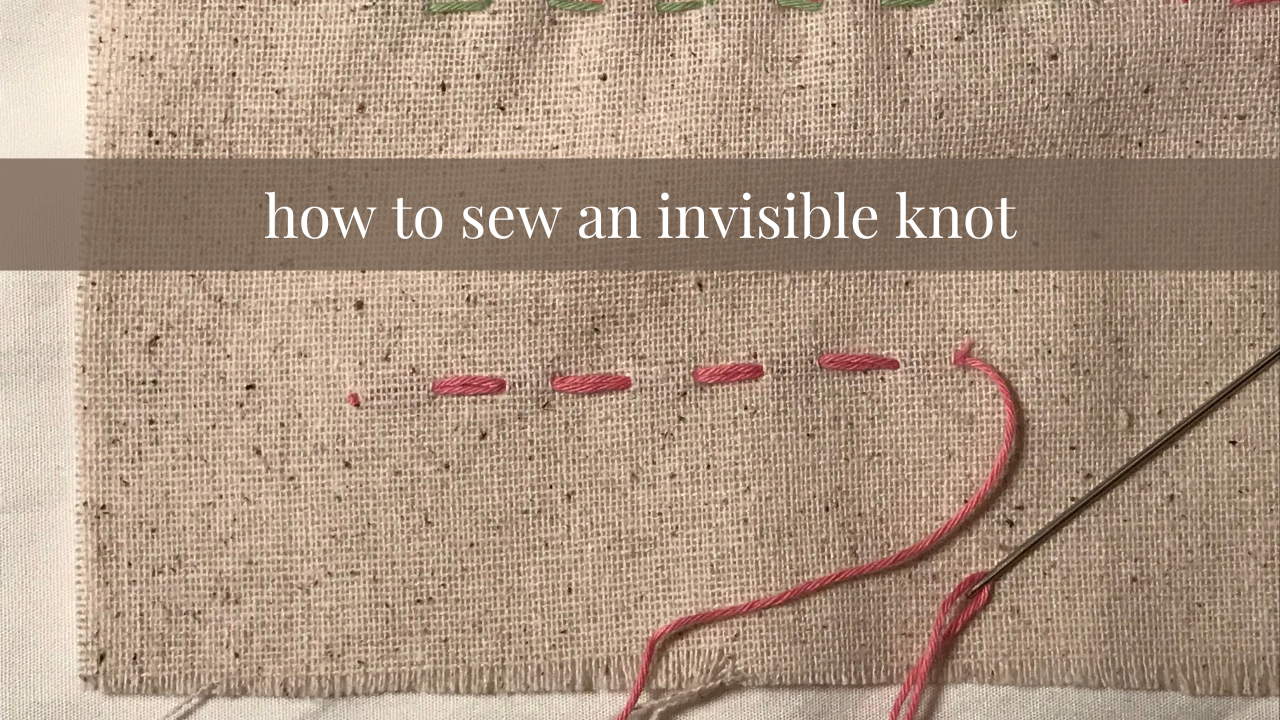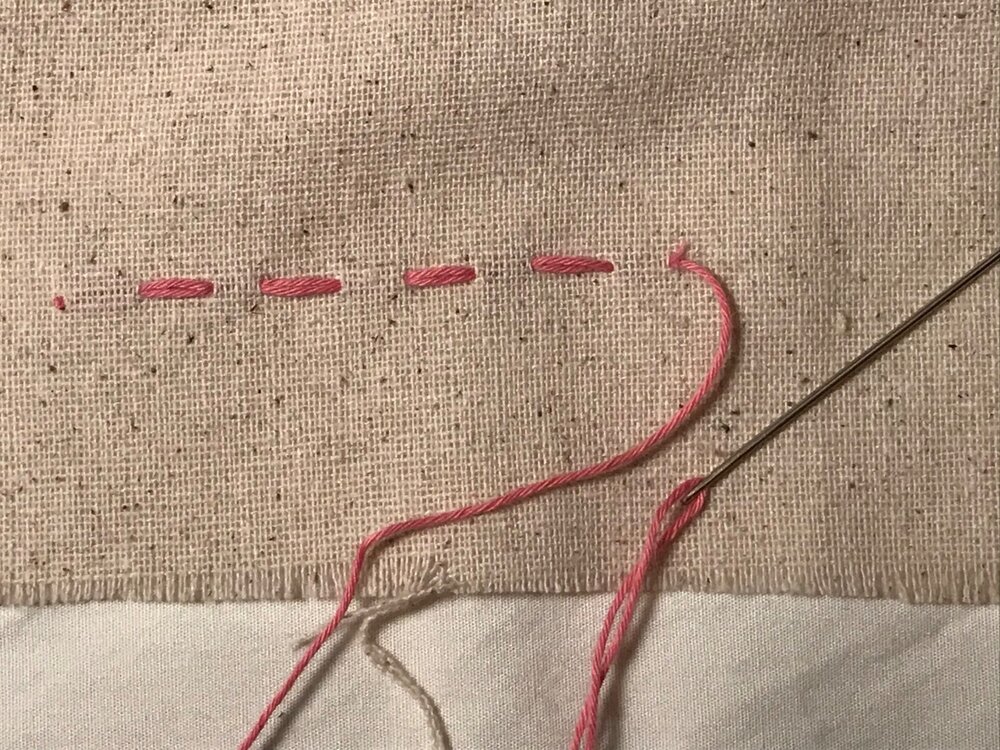To knot... or not?
Nov 29, 2019
This is a question I get asked all the time - and if you have learnt traditional, western embroidery, you will be familiar with the taboo of tying knots in your thread that helps to anchor the thread. The reason for this is because knots can create little bumps in the delicate embroidered work.
Knots however, are generally used in sashiko embroidery, because sashiko was used on garments that received a lot of use. You don’t want your stitching to come undone!
Hitomezashi, (one stitch sashiko designs that are worked on a grid of straight lines) always begins and ends with a knot.
It is possible for moyozashi (pattern sashiko) design and designs that will be seen from both sides such as a quilt, to start and finish without a knot. As demonstrated in the image below.
 Step 1: start by taking a couple of stitches (roughly about an inch), going in the opposite way to your planned stitching path.
Step 1: start by taking a couple of stitches (roughly about an inch), going in the opposite way to your planned stitching path.
 Step 2: turn around and stitch back over your first stitches. Take care to wrap the thread around one strand of woven fabric to help it catch.
Step 2: turn around and stitch back over your first stitches. Take care to wrap the thread around one strand of woven fabric to help it catch.
I always like to use a knot, and sometimes will stitch a few anchor stitches that prevents the knot from pulling through to the front of the work. Ultimately, with repair work, we want our stitches to remain in place.

